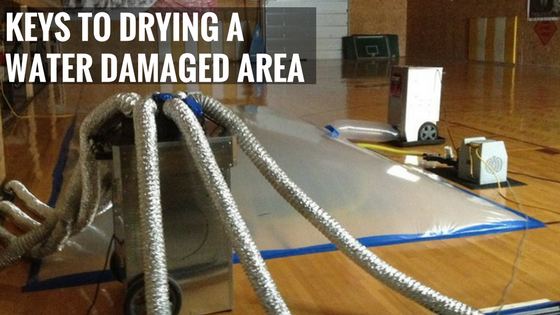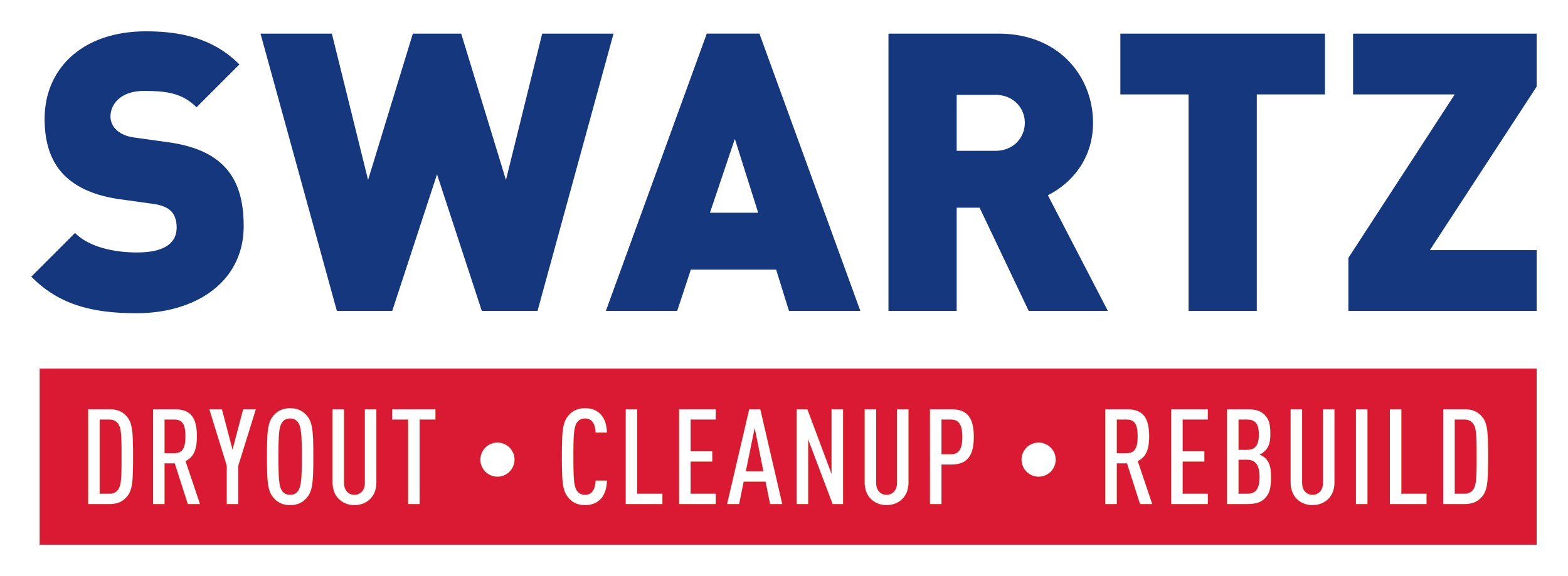
Keys to Drying a Water Damaged Area
Properly removing water from a damaged structure is incredibly important and should be taken seriously. Here are the keys to properly drying a water damaged area:
Easy Water
In any water loss situation, you will want to start with the removal of all “easy” water. Easy water is the obvious water that can be seen throughout the area. This means:
- Absorbing water that is standing on contents and fixtures.
- Vacuuming or mopping water from flooring and horizontal surfaces.
- Draining water out of the ceiling, wall cavities, and ductwork.
- Pumping standing water from below-grade areas (basement or crawlspace).
- Hauling out saturated items, like rugs and furniture, to dry elsewhere and to help reduce the moisture levels.
By removing all the easy water first, you’ll get a full scoop of understanding of how deep the water damage goes. This will help to determine what kind of tools and equipment will be necessary for the next phase of drying the area.
Extraction Tools and Equipment
After all the easy water has been removed, it’s time to break out the powerful extraction tools and equipment that will really pull up and out all the moisture. We use the Vortex Drying System, which uses high-powered vacuum extraction equipment to pull water out of carpets and floors; multiple high volume fans to move moisture into the air, and dehumidifiers to dry the air. By continually monitoring the vapor pressure and relative humidity in and out of the structure, we are able to determine if drying is progressing or if adjustments need to be made to the equipment to meet the drying goals.
Evaporation and Dehumidification
Controlling the HAT – Humidity, Airflow, Temperature – is vital to preventing secondary damage and problems. When you lose control of the HAT, you leave the door right open for mold to grow and take over. To keep control, you will want to create the perfect environment of warm air; which will hold more moisture, helping to speed up evaporation and will more efficiently dry out the structure.
To accomplish this, you will want to get the dehumidification process started. The start of this process is to bring in quite a bit of air movement to the water damaged area by utilizing high volume fans to move the moisture into the air. Once the moisture has evaporated into the air, you will want to pull the moisture out of the air using dehumidifiers. The dehumidifier will then take that moisture out of the environment simply by draining it out into a sink or water containment vessel.
Monitoring
During the entire process of drying a water damaged area, monitoring is a major key. Monitoring involves the use of tools, such as penetrating and nonpenetrating meters to read the moisture and humidity levels and infrared technology to detect moisture behind walls and ceilings. These readings provide documentation and data the drying process is in fact working and solidifies when the job is done.
The benefits of properly executing keys listed above are:
- Money is (usually) saved because the wood flooring, carpet, pad, subfloor, etc. has been properly dried and saved and will not need to be replaced.
- A major reduced risk of mold growth.
- Quicker drying times, returning the folks affected by their home or business sooner.
If you have ever find yourself in water damage situation that is over your head, give the professionals at Swartz Contracting a call!
